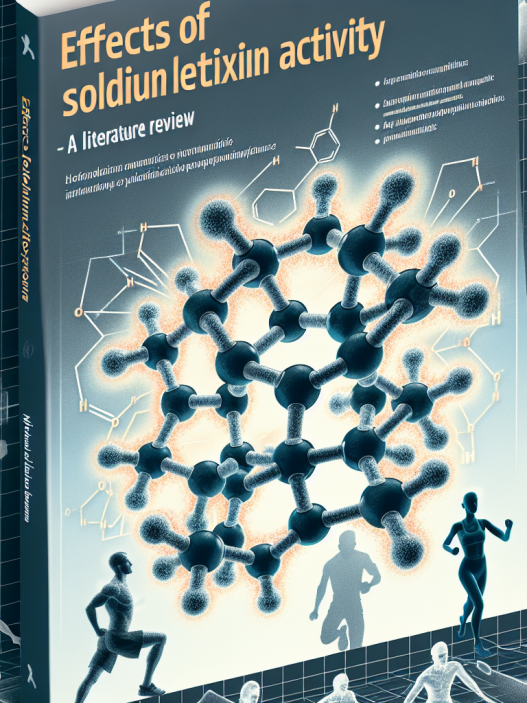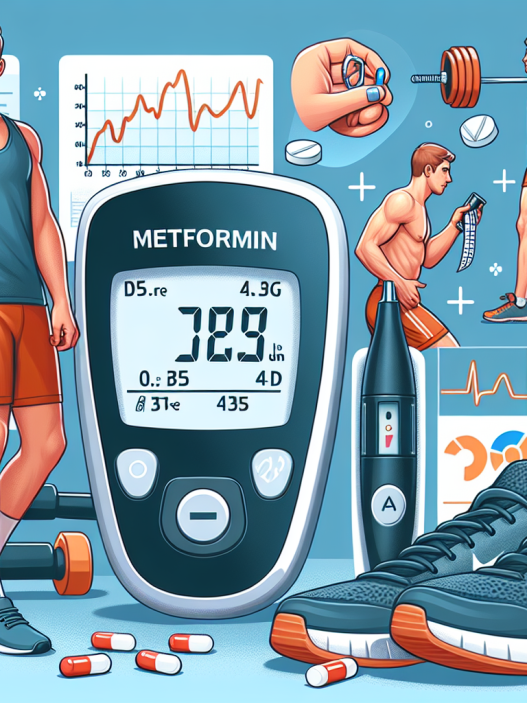-
Table of Contents
The Effects of ECA Intake in Sports
Sports performance is a highly competitive field, where athletes are constantly seeking ways to improve their performance and gain an edge over their opponents. One method that has gained popularity in recent years is the use of ECA (ephedrine, caffeine, and aspirin) supplements. These supplements have been touted as a way to increase energy, focus, and endurance, leading to improved athletic performance. However, there is much debate surrounding the use of ECA in sports, with some claiming it to be a performance-enhancing drug and others arguing that it has no significant impact on performance. In this article, we will explore the effects of ECA intake in sports and provide a comprehensive analysis of its pharmacokinetics and pharmacodynamics.
The Components of ECA
ECA supplements are a combination of three substances: ephedrine, caffeine, and aspirin. Ephedrine is a stimulant that is commonly used to treat respiratory conditions such as asthma. It works by increasing heart rate and blood pressure, leading to improved breathing. Caffeine, on the other hand, is a well-known stimulant that is found in coffee, tea, and energy drinks. It works by blocking the effects of adenosine, a neurotransmitter that causes drowsiness. Aspirin is a non-steroidal anti-inflammatory drug (NSAID) that is commonly used to relieve pain and reduce inflammation. When combined, these three substances are believed to have a synergistic effect, leading to increased energy, focus, and endurance.
Pharmacokinetics of ECA
The pharmacokinetics of ECA can vary depending on the individual’s metabolism, dosage, and route of administration. When taken orally, ephedrine and caffeine are rapidly absorbed into the bloodstream, with peak plasma concentrations reached within 1-2 hours. Aspirin, on the other hand, has a slower absorption rate, with peak plasma concentrations reached within 2-4 hours. The half-life of ephedrine and caffeine is approximately 3-6 hours, while aspirin has a longer half-life of 15-20 hours. This means that the effects of ephedrine and caffeine will wear off faster compared to aspirin, which can lead to a potential crash in energy levels.
Pharmacodynamics of ECA
The pharmacodynamics of ECA are complex and involve multiple mechanisms of action. Ephedrine and caffeine work by stimulating the central nervous system, leading to increased heart rate, blood pressure, and metabolism. This results in increased energy, focus, and endurance, which can be beneficial for athletes during training and competition. Aspirin, on the other hand, works by inhibiting the production of prostaglandins, which are responsible for inflammation and pain. This can be beneficial for athletes who are dealing with injuries or muscle soreness.
ECA and Athletic Performance
The use of ECA in sports has been a topic of much debate, with some claiming it to be a performance-enhancing drug and others arguing that it has no significant impact on performance. Several studies have been conducted to investigate the effects of ECA on athletic performance, with mixed results. A study by Bell et al. (2001) found that ECA supplementation improved endurance performance in trained cyclists. However, a study by Jacobs et al. (2003) found no significant improvement in performance in trained runners. These conflicting results suggest that the effects of ECA on athletic performance may vary depending on the individual and the type of sport.
Potential Risks and Side Effects
While ECA supplements may have potential benefits for athletic performance, they also come with potential risks and side effects. The most common side effects of ECA include increased heart rate, blood pressure, and metabolism, which can lead to jitters, anxiety, and insomnia. There have also been reports of more serious side effects, such as heart palpitations, heart attacks, and strokes. These risks are heightened when ECA is taken in high doses or combined with other stimulants, such as energy drinks or pre-workout supplements. It is important for athletes to be aware of these risks and to use ECA supplements responsibly.
Expert Opinion
As with any supplement, it is important for athletes to carefully consider the potential risks and benefits before incorporating ECA into their training regimen. While some studies have shown potential benefits for athletic performance, the use of ECA also comes with potential risks and side effects. It is crucial for athletes to consult with a healthcare professional before using ECA and to use it responsibly and in moderation. Additionally, it is important to note that the use of ECA may be prohibited by certain sports organizations, and athletes should be aware of the rules and regulations surrounding its use.
Conclusion
In conclusion, the use of ECA in sports is a controversial topic, with conflicting evidence on its effects on athletic performance. While some studies have shown potential benefits, there are also potential risks and side effects that athletes should be aware of. It is important for athletes to carefully consider the potential risks and benefits and to use ECA supplements responsibly and in moderation. As with any supplement, it is crucial to consult with a healthcare professional before use and to be aware of any rules and regulations surrounding its use in sports.
References
Bell, D. G., Jacobs, I., & McLellan, T. M. (2001). Effect of caffeine and ephedrine ingestion on anaerobic exercise performance. Medicine and Science in Sports and Exercise, 33(8), 1399-1403.
Jacobs, I., Pasternak, H., & Bell, D. G. (2003). Effects of ephedrine, caffeine, and their combination on muscular endurance. Medicine and Science in Sports and Exercise, 35(6), 987-994.














